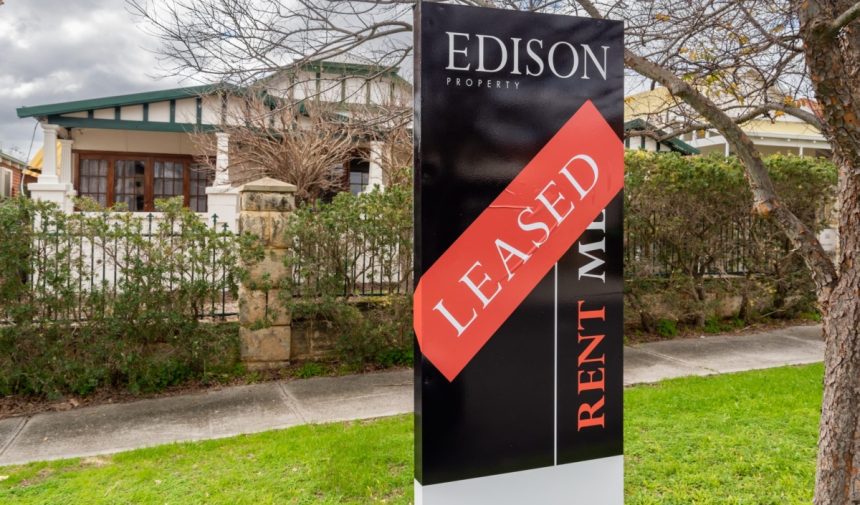Western Australia has emerged as the country’s worst place for rising rents, according to newly released research.
Data from Suburbtrends 2023 Rental Pain Index reveals significant disparities in rental conditions across WA, with the highest average rent increase and low vacancy rates showing the harsh reality of WA’s highly strained rental market.
The report shows a 16.59 per cent increase in weighted average rents across WA’s top 25 suburb groups alongside a vacancy rate of 0.58 per cent, which is changing at the joint slowest speed in the country.
Perth tops capital rent rises
Meanwhile, last month’s SQM Research’s Weekly Rents Index showed advertised rents in Perth had risen more than any other state capital, with a 19 per cent increase since last year and a 0.4 per cent vacancy rate – the nation’s tightest.
WA’s rental crisis is not exclusive to the state’s metro areas, with residents of the Goldfields mining region victim of the second highest rental increase nationwide, with a 30.8 per cent rise since 2022, while the state’s Central Coast region seeing an increase of 24.4 per cent.
Kaylee Ferguson, Head of Property Management at The Property Exchange, one of the state’s largest property and lease management companies, told BuildIT multiple factors had combined to form WA’s rental crisis, including Covid-19, population growth and construction companies collapsing.
“The main thing is the population growth; when the borders opened post-COVID, we had so many people returning, and now we have more people coming here to help with our skills and labour shortage,” she said.
“Then we have issues in the building sector with some of our major construction companies closing down – stopping new builds.”
“So it really becomes a case of supply and demand with even more people forced into the rental market as new homes are not being built.”
The top five Western Australian suburbs with the highest rental pain index score are Calista, College Grove, Bull Creek, Tuart Hill and Hamilton Hill.
WA rent rises expected to continue
Real Estate Institute of Western Australia CEO Cath Hart warned BuildIT that the record high rents would continue to rise with no quick fix for tenants.
“There is no immediate solution to the current challenges facing tenants – it will take time for the market to adjust,” she explained.
“In the short term, we are likely to see an increase in share housing or young adults staying in the family home longer to combat the dual challenges of rising rent prices and the shortage of homes.”
Ms Hart said the state’s weekly rent increases had been somewhat impacted by the RBA increasing interest rates, which had seen investor costs soar as the average WA mortgage jumped by 48 per cent since May 2022, with landlords passing on some of those costs to renters.
However, she said housing supply challenges were the key drivers behind the rental spikes, with increased building costs and elongated construction times playing a significant role.
“Longer term, WA needs to make sure it builds enough houses…the big lesson out of the past decade is how important it is that WA maintains its long-term average of 22,000 new home builds starts per year,” she told Buildit.
“While this has lifted recently, only about 13,000 were built in 2019… If we don’t build enough homes to meet the needs of our growing population, we may find ourselves in a similar situation again.”
“We will see a change in the rental market when supply increases. When there is more competition and tenants have more choices, prices will fall – It has happened before and will happen again.”
High demand for homeless services
Shelter WA CEO Kath Snell said the lack of affordable housing had brought unprecedented demand for homelessness services.
“This rental crisis is due to a chronic shortage of available and affordable homes, which will require cooperation across the WA housing sector to fix.
“Community housing organisations stand ready to be the perfect partners to build more homes and increase the diversity of housing. They provide great outcomes for tenants and deliver quality homes 35 per cent cheaper than the government acting alone.” she said.
Urban Development Institute of Australia CEO Tanya Steinbeck warned WA will be 20,000 homes short of what is needed to meet expected housing demand over the next three years.
“WA needs to ensure it is front of the pack when seeking to secure funding support through the National Housing Infrastructure Facility and, in 2024, the Housing Australia Future Fund,” she said.
“If we want to see successful partnerships deliver social and affordable housing where it is needed, then we need the government to provide procurement pathways that provide the guardrails for public sector investment whilst being agile to foster innovation so that viable projects can get off the ground – and fast.”
Master Builders WA Director of Housing and Construction, Jason Robertson, said solving the crisis would require significant collaboration across government and industry.
“Right now, be it social and community housing, rental properties, or owner-occupiers, the common constraint is supply,” he said.
“To improve housing affordability right across the market, all levels of government must continue to work together with industry to have sustainable solutions enabled, including implementing continuous land supply through planning and rezoning, taxes on development and buying processes can be reduced, along with procurement reforms that can allow industry to help deliver on the targets.”







